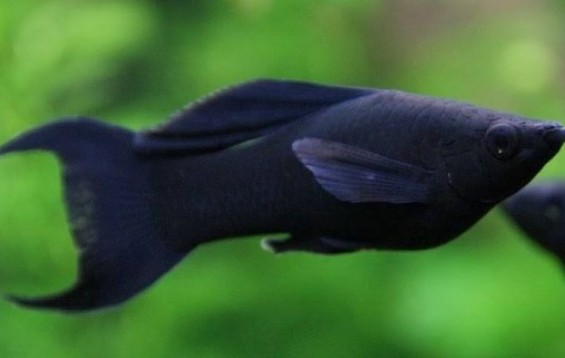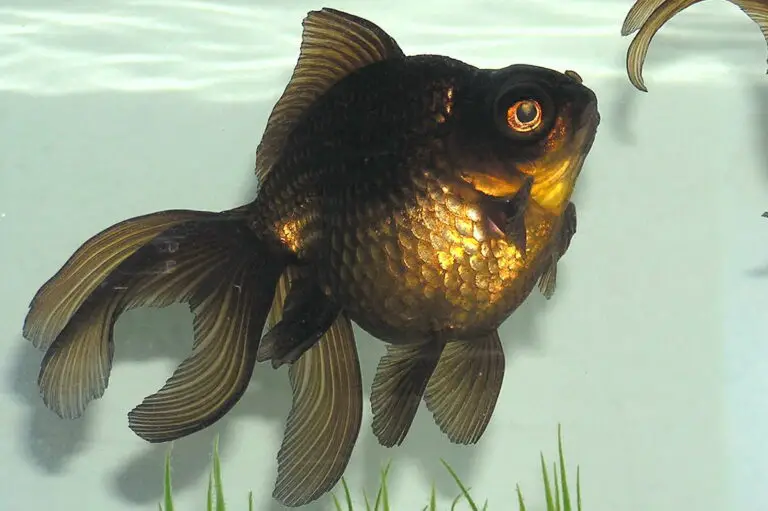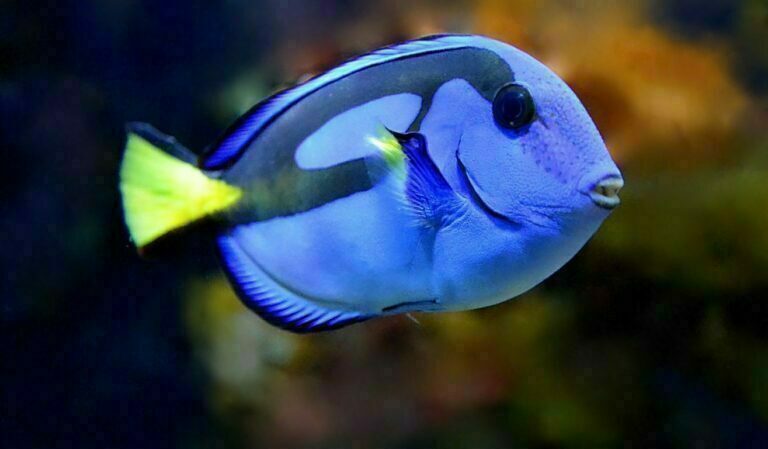Lyretail Molly: Everything You Need to Know
If you’re looking for a vibrant, easy-to-care-for fish to add to your aquarium, the lyretail molly is a great option. This freshwater fish is native to Mexico and Central America, and is known for its striking black and white coloration and distinctive, lyre-shaped tail fin. In this article, we’ll cover everything you need to know about lyretail molly care, from their dietary needs to their ideal aquarium conditions.
To start, let’s take a closer look at the lyretail molly’s origin and natural habitat. These fish are typically found in slow-moving, vegetation-rich bodies of water, so it’s important to recreate this environment in your aquarium. They’re also known for their peaceful temperament and ability to get along with a variety of other fish species. Whether you’re a seasoned aquarium owner or a beginner, lyretail mollies are a great choice for adding color and personality to your tank.
It is an omnivore and will eat most types of aquarium foods, including flakes, pellets, frozen foods, and live foods. The Lyretail Molly prefers to live in groups and should be kept in an aquarium with at least 4-6 other fishes of the same species.
One of the most popular freshwater aquarium fish is the Lyretail Molly. This colorful fish is a favorite among aquarists because of its beautiful fins and tail. The Lyretail Molly is a member of the Poeciliidae family which includes over 200 species of live-bearing fishes found in fresh, brackish, and salt water habitats throughout the world.
Live-bearing means that the female gives birth to live young rather than laying eggs. The Lyretail Molly is native to Central America where it can be found in slow moving streams and ponds with muddy bottoms. The Lyretail Molly has an elongated body that can grow up to 4 inches in length.
The males are usually smaller than the females and have longer fins. The colors of this fish vary depending on the region it comes from but they are typically some shade of silver, gold, or green with black spots on their sides. Some specimens may also have orange or red coloration on their fins and tail.
Physical Characteristics
Lyretail Mollies are a unique species of freshwater fish that are known for their striking appearance and peaceful temperament. The physical characteristics of Lyretail Mollies, including their body structure and color varieties.
Body Structure
Lyretail Mollies have an elongated body that can grow up to 4 inches in length. The males are usually smaller than the females and have longer fins. The dorsal fin of the male Lyretail Molly is elongated and pointed, while the female’s is shorter and rounded. The anal fin of the male is also elongated and pointed, while the female’s is shorter and rounded.
Lyretail Mollies have a unique tail structure that is responsible for their name. Their tail fin is lyre-shaped, with the upper and lower lobes extending far beyond the middle lobe. This gives the fish a distinct and elegant appearance.
Color Varieties
Lyretail Mollies come in a variety of colors, including black, silver, gold, and orange. Some Lyretail Mollies have a solid color, while others have a combination of colors. The most common color variety is black, with silver and gold following closely behind.
In addition to their solid color varieties, Lyretail Mollies also have a spotted variety. These fish have black spots on a silver or gold background, giving them a unique and eye-catching appearance.
Overall, Lyretail Mollies are a beautiful and unique species of freshwater fish that are sure to add a touch of elegance to any aquarium. With their striking appearance and peaceful temperament, they are a popular choice for both beginner and experienced fish keepers alike.
TOP 10 Beautiful Lyretail Molly Fish you’ve never seen
How Big Do Lyretail Mollies Get?
Lyretail mollies are a type of fish that can grow to be quite large. They are native to the waters around Cuba and the Bahamas, and can grow to be up to 18 inches long. Lyretail mollies are a popular type of fish for aquariums, as they are relatively easy to care for and provide a beautiful addition to any tank.
How Many Mollies Should You Have Together?
There is no definitive answer to this question as it depends on a number of factors, including the size of your tank, the species of molly you are keeping, and your own personal preferences. In general, however, it is recommended to keep at least two mollies together so they can socialize and stay active. If you are keeping a larger group of mollies, be sure to provide plenty of hiding places and areas for them to explore so they don’t become stressed.
Are Lyretail Mollies Hardy?
Lyretail mollies (Poecilia mexicana) are a type of fish that is native to fresh and brackish waters in Mexico and Central America. They are a popular aquarium fish because of their beautiful tail fins and their relatively easy care requirements. Lyretail mollies are generally considered to be hardy fish, but there are a few things you need to do to ensure they stay healthy and thrive in your aquarium.
It’s important to provide them with plenty of space. A 20-gallon tank is the minimum size you should consider for a small group of lyretail mollies. They also prefer water that is on the warmer side, so an aquarium heater may be necessary.
Additionally, lyretail mollies require access to both fresh and salt water, so you’ll need to set up a separate freshwater or brackish water tank for them if you don’t already have one. Lyretail mollies are omnivorous, so they will eat just about anything you give them. However, it’s important to provide them with a well-balanced diet that includes both plant and animal matter.
A high-quality flake food or pellet can serve as the base of their diet, but you should supplement this with live foods (such as brine shrimp or bloodworms) and frozen foods (such as mysis shrimp or krill). You can also offer them blanched vegetables like zucchini or spinach on occasion. As long as you provide them with the proper environment and diet, lyretail mollies should be relatively hardy fish that will thrive in your aquarium!
What Size Tank Do Mollies Need?
Mollies are a type of fish that is popular in home aquariums. They are known for their bright colors and easy-going nature. Mollies are not very demanding fish, but they do need a little bit of space to swim and plenty of hiding places.
A good rule of thumb is to provide at least 10 gallons of tank space per molly.

Credit: www.tankfacts.com
Golden Lyretail Molly Male Or Female!
Molly fish are a type of freshwater fish that are popular in home aquariums. They are relatively easy to care for and can live in a variety of different types of habitats. Molly fish come in a wide range of colors, including gold, silver, black, and even neon green.
One of the most popular color morphs is the golden lyretail molly. As the name suggests, these fish have a beautiful gold body with long fins that resemble the shape of a lyre.
Males and females can be distinguished by their appearance and behavior.
Females are typically smaller than males and have shorter fins. Male mollies also tend to be more aggressive than females and will often chase them around the tank. When it comes to breeding, males will also often build nests out of plants or other materials in an effort to attract mates.
Lyretail Molly Orange
The Lyretail Molly is a beautiful, peaceful fish that is perfect for any aquarium. They are a hardy species that is easy to care for, and they make a great addition to any community tank. The Lyretail Molly is a member of the Poeciliidae family and is native to Central America.
They can be found in freshwater streams, rivers, and lakes. The average lifespan of a Lyretail Molly is 3-5 years.
The Lyretail Molly gets its name from its long, flowing fins and bright orange coloration.
Males and females look very similar, but males tend to be slightly larger than females. These fish are very active and love to swim around the tank. They will do best in an aquarium that has plenty of hiding places and plenty of room to swim around.
Lyretail Mollies are omnivores and will eat just about anything you give them! A quality flake food or pellet food should make up the majority of their diet, but they will also enjoy live foods such as brine shrimp or bloodworms on occasion. Be sure to feed them several small meals per day rather than one large meal.
These fish are very easy to breed! In fact, they often breed quite prolifically in home aquariums without any intervention from the aquarist. If you do want to intentionally breed your Lyretail Mollies, simply provide them with plenty of good quality food and clean water conditions.
Once the female is gravid (full of eggs), she will release them into the water column where they will be fertilized by the male’s sperm .
Gold Dust Lyretail Molly
gold dust lyretail mollies are a type of fish that is native to the rivers and streams of Central America. They are a popular choice for aquariums because of their bright colors and active personalities. Gold dust mollies typically have a lifespan of 2-3 years, but can live up to 5 years with proper care.
These fish are omnivorous and will eat a variety of foods, including flakes, pellets, freeze-dried foods, and live or frozen foods. It is important to provide them with a varied diet to ensure they get all the nutrients they need. Gold dust lyretail mollies are also known to be good parents and will often care for their young fry (baby fish).
If you’re thinking about adding gold dust lyretail mollies to your aquarium, there are a few things you should keep in mind. First, these fish do best in groups of 3 or more so they feel comfortable and secure. Second, they need plenty of hiding places since they can be shy around new tank mates.
And finally, because they are such active swimmers, you’ll need an aquarium that’s at least 20 gallons in size.
Lyretail Molly Size
The Lyretail Molly is a beautiful freshwater fish that is popular in the aquarium trade. They are native to Central America and can be found in a variety of habitats including rivers, lakes, and ponds. Mollies are typically silver in coloration with a black lateral line running down their body.
The fins of Lyretail Mollies may also have black tips. Males tend to be larger than females and have longer dorsal fins.
Lyretail Mollies are easy to care for and make great additions to community tanks.
They prefer water temperatures between 72-78 degrees Fahrenheit and will do best in an aquarium that is at least 20 gallons in size. A sandy substrate with some live plants is ideal for these fish. Mollies are omnivorous and will eat a variety of foods including flakes, pellets, freeze-dried foods, and live or frozen foods.
It’s important to provide them with a well-rounded diet for optimal health. These fish are also known to be quite hardy so they are a good choice for beginner aquarists as well.
Lyretail Mollies are peaceful fish but can sometimes be territorial towards other members of their own species.
If you keep more than one Molly in your tank it’s best to have at least one male and two females or multiple males and females depending on the size of your aquarium.
Lyretail Molly Breeding
A Lyretail Molly is a type of tropical fish that is popular in aquariums. They are native to freshwaters in Central America and typically grow to be about four inches long. Lyretail Mollies are known for their bright colors and beautiful fins.
They are also livebearers, meaning they give birth to live young rather than laying eggs. Lyretail Mollies are easy to care for and make great additions to any aquarium. If you’re thinking about adding one (or more!) to your tank, here’s what you need to know about Lyretail Molly breeding:
1. Lyretail Mollies can reach sexual maturity at just two months old, so if you have both male and female fish in your tank they may start breeding without you even realizing it!
2. Females will usually have between 20-40 fry (baby fish) at a time, but this number can vary depending on the size of the mother fish.
3. Fry can be born as small as 6mm long, but will quickly grow to their full size with proper care from their parents and good water conditions in the aquarium.
4. Most fry will survive if given plenty of hiding places and food, but sometimes cannibalism can occur so it’s important to keep an eye on things just in case. supplementing with live foods or brine shrimp can help ensure all the fry get enough to eat.
5. For the first few weeks after giving birth, female mollies should be separated from males (and other potential mates) to prevent them from getting pregnant again too soon – which can be harmful for their health. After a month or so they can usually be reintroduced without any problems though.
Conclusion
- Lyretail mollies are easy to care for and add vibrant color to your aquarium.
- They are native to Mexico and Central America and prefer slow-moving, vegetation-rich water.
- Lyretail mollies are peaceful and get along well with other fish species.
The Lyretail Molly is a beautiful fish that is popular in the aquarium trade. They are native to the rivers of Central and South America and can grow to be quite large. Lyretail Mollies are easy to care for and make great additions to any freshwater tank.





